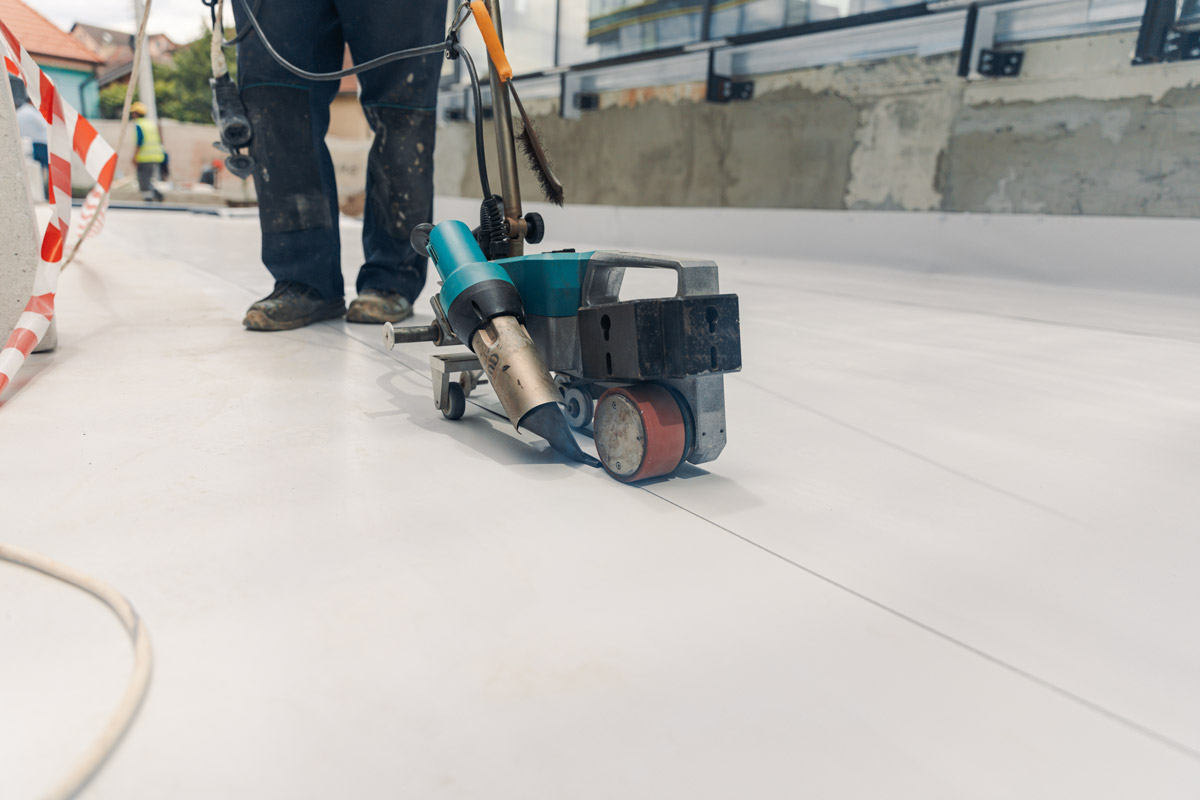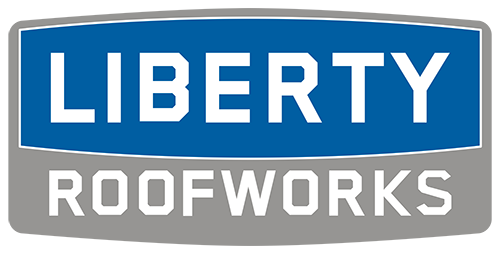The Advantages, Costs, and Everything Else About TPO Roofs
TPO roofing is a popular roofing material nowadays. Even though it is widespread, most homeowners have no idea what it is or any other information about it.
If you’re just like everybody else, you’ve come here because you have no idea what TPO roofing means. We realize how uncomfortable it is to spend your hard-earned cash on something you don’t understand, so we’ve shared this article with everyone to learn more.

What Is TPO Roofing?
Thermoplastic polyolefin (TPO) is a white, single-ply membrane used for residential and commercial roofing. TPO is a white membrane, so instead of absorbing heat, it reflects it.
If you have a low-slope dormer or flat roof above your bedroom, TPO is an excellent option for keeping the space below cooler. Furthermore, you can use it over a non-living area such as a covered patio or garage.
However, if you can view the ceiling from a window, you should consider the appearance of TPO’s white membrane. If the window is looking across the membrane, the white will become filthy faster.
Furthermore, it’s okay if you aren’t bothered about how it looks or can’t see the top. It’s just something to remember during the decision-making process.
Why Is a TPO Roofing Needed?
After you understand the meaning of TPO roofing, you should know why you should choose it in the first case. A low slope roof or roof facet has a pitch (aka steepness) of less than 2:12 (or less than two vertical units up in every other 12 horizontal units out).
Water will not run off a flat roof or low slope as quickly as it could on a greater pitch, so it must be waterproof. As a result, you cannot use asphalt shingles since they can’t hold standing water.
Roofers didn’t develop this independently; it’s part of the construction code. Asphalt shingles cannot be installed on a ceiling with a pitch less than 2:12, following the shingle manufacturer’s installation guidelines and building requirements.
This is why flat or low-slope roofs require the installation of TPO roofing membranes (or some other flat roof system). Also, do not choose a roofing contractor that suggests placing shingles on your low-slope roof.
Contact Us Today
Have skilled roofers at Liberty Roofworks provide you with roofing services in Columbia, SC. We provide a free roof inspection and estimate for your convenience.
Speak with our experts at any time regarding your property goals or concerns. We’re here to confer with you about your property to ensure great results.
Liberty Roofworks
1397 Cilantro Ct.,
Tega Cay SC 29708
Monday-Friday | 8am-5pm
(704) 463-8177

What’s the Durability of TPO Roofing?
A roof’s lifespan indicates the ROI and when it will need to be changed, which raises the question, how long can TPO roofing last?
Your TPO roofing covering can last up to 25 years if correctly placed. However, the fact that it promises 25 years does not guarantee it will live that long.
This is because several elements influence how long a rooftop will last. These criteria include the climate in your area, the amount of direct sunshine that strikes it, and the installation quality.
However, if the roofers adequately place the TPO membrane roof, it will last a long time.
What’s the Cost of TPO Roofing?
Pricing is a crucial aspect of any TPO roofing study. Budget between $14.00 to $17.00 per sq foot for one smaller TPO membrane rooftop and roughly $12.00 per sq foot for slightly larger projects.
The price of a TPO roof is determined by several factors, just like the cost of other roofing materials. Moreover, one of these criteria is the kind of insulation employed beneath the membrane.
Employing thick enough insulation to insulate the entire building will cost more than simply using textile insulation and bonding the membrane. Another important consideration is the dimension of the rooftop receiving the membrane.
This may appear contradictory, but the expense per square foot for smaller projects will tend toward the greater end of the cost spectrum. However, the price per square foot drops when it comes to larger commercial projects.


TPO Roofing Installation
Following the preparation of the current substrate, the insulation is put in by removing or cleaning the existing roof. The facility owner has several insulating options to select from:
- Polyisocyanurate (Polyiso) – The most popular type of roofing insulation, Polyiso is pricier but has a higher R-value score, making it a wise investment.
- Expanded Polystyrene (EPS) – The roof, walls, and floors are completely insulated with EPS because it has the best R-value for your money. EPS is suitable for ground contact; therefore, it does not absorb water over time.
- Extruded Polystyrene (XPS) – In terms of price and performance, XPS lies between EPS and Polyiso and is typically identified by its green, blue, or pink tint. XPS has a perm value of one, making it semipermeable.
The TPO covering can bond adhesively or be mechanically connected to the cover board. When the membrane spreads out, the roofer returns to weld the joints with a hot-air gun.
TPO Roof Options
TPO roofing has been a market favorite in commercial uses since its introduction. Nonetheless, it has witnessed a significant increase in usage in residential areas in recent years.
One reason for this is TPO’s variety of colors, aesthetic appeal, and energy-saving possibilities. Another advantage is its width and thickness versatility, allowing it to be usable in a wider range of applications.
Thickness
The width of the TPO barrier you select should be sufficient for your particular function (i.e., commercial or residential). When it comes to optimal performance and longevity, the upper surface of the TPO membrane will be the thickest.
Measurements and Calculations
To properly install a TPO roof, your roofing company needs to be able to obtain precise measurements. The constructor must calculate the probable uplift load on your roof to determine the correct membrane width and fastener spacing.
Weldability
The highest-quality TPO construction materials offer a large weldability window. This implies that each TPO strip may be bonded together more reliably at various temperatures, resulting in stronger seams.
Wide Sheets
TPO roofing materials, for example, can be available in large rolls or sheets. The wider your TPO materials, the fewer gaps your contractor will need to make. This means the roof will be more durable, stronger, and faster to install because fewer mechanical connections and joining processes will be necessary.
TPO Roofing Advantages
A commercial single-ply system can last 30 years if properly placed and maintained. Other advantages of single-ply membrane installation include the following:
- Customer Choice of Insulation – Because single-ply doesn’t provide the insulation element, you, as a customer, have additional alternatives for insulating your facility’s roof.
- Fire-Rated Class A – EPDM and TPO membranes can gain Underwriters Laboratories fire resistance Class A designations by applying fire-resistant chemicals throughout the manufacturing duration.
- Retentive or Reflective – TPO is a white, highly reflective material. On the other hand, EPDM is frequently referred to as “Black Roofs” because of its naturally dark appearance.

How to Choose a TPO Roof
You can ensure you get the most benefit from your TPO roof by selecting the best product and roofing contractor. When searching for and constructing TPO roofing, keep the following in mind:
Color Range
TPO membranes can fulfill various design and application design requirements. A TPO is commonly white, but these membranes can be grey, white, or black.
Additionally, to save energy, white TPO membranes provide the most significant benefit. However, you may prefer black or gray for aesthetics or other reasons. The white surface reflects UV light and heats out of the house the best.
Thickness and Width
TPO roofing membranes come in various width and thickness options and multiple colors. The maker of the TPO product determines the availability of different thicknesses. With more options, you can better select the kind best fits your application situation (i.e., residential or commercial, climate, etc.).
- Commercial-grade TPO is available in 3 or 12-foot-wide rolls with thicknesses of up to 0.080 inc.
- Residential TPO has a width of 0.045 to 0.060 inches and is available in rolls 6.5 feet in diameter and 100 feet in length.
TPO is one of your best options if you have a low-sloped or flat roof on your commercial structure or home for various reasons.
On the other hand, TPO roofing is a new product in the roofing materials market; therefore, it’s crucial to be aware of any potential negatives.
A TPO is an excellent option for roofs that need waterproofing, but the benefits are not limited to these applications. TPO roofing membrane has many other benefits, including high durability, better airflow and ventilation, and increased sustainability.
Moreover, TPO roofing is a good option for green roofs, providing a sustainable substrate for your plants, and it’s also a good option for roofs that need to repel water when it rains.
TPO products are an excellent investment for any home or commercial building. When you choose TPO membrane, you can reap the material’s benefits for many years. Therefore, don’t worry about the long-term cost.
If you have any problems or want a TPO roof replacement, make sure to call us, and we will help with whatever you need in Columbia, SC. We have many years of experience, and it’s our pleasure to assist home or business owners with roof-related issues.
Call us now if you have any general questions about commercial roof systems or roofing installation in Columbia, SC.
